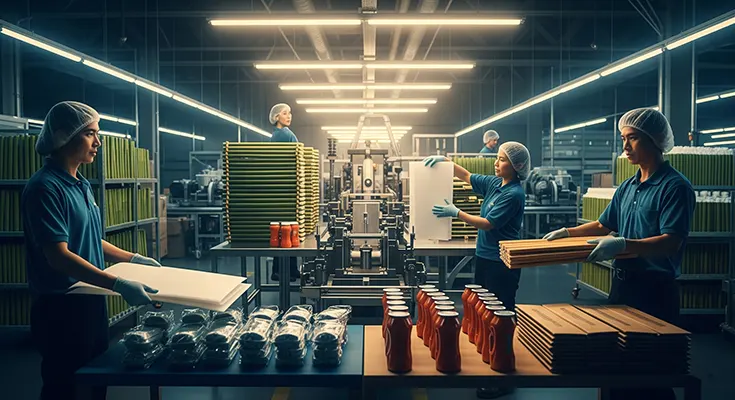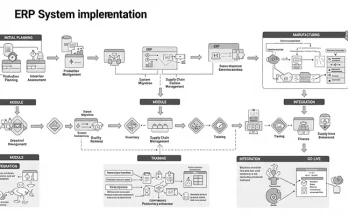In today’s environmentally conscious landscape, consumer goods brands are increasingly prioritizing sustainable packaging materials as a means of reducing their environmental footprint and appealing to eco-conscious consumers. The shift towards eco-friendly packaging not only reflects a commitment to environmental stewardship but also presents opportunities for brands to differentiate themselves in the market and build stronger connections with sustainability-minded consumers. In this article, we delve into the significance of sustainable packaging materials and explore the benefits they offer to consumer goods brands.
The Importance of Sustainable Packaging
The exponential growth of consumerism has led to a surge in packaging waste, contributing to environmental degradation and pollution. As a result, there is a growing demand for sustainable packaging that minimizes the impact on the planet. Consumer goods brands are recognizing the imperative to adopt eco-friendly materials that reduce resource consumption, emissions, and waste generation, aligning with the broader global movement towards sustainability.
Benefits of Sustainable Packaging Materials
1. Environmental Impact Reduction
- Sustainable packaging materials, such as biodegradable plastics, recycled paper, and compostable alternatives, contribute to reducing the carbon footprint of consumer goods brands. By utilizing these materials, brands can mitigate their impact on natural resources and limit the generation of non-biodegradable waste.
2. Enhanced Brand Image and Consumer Appeal
- Embracing sustainable packaging reflects positively on the brand’s image and ethos, positioning it as socially responsible and environmentally conscious. This resonates with consumers who prioritize sustainability, potentially fostering greater brand loyalty and affinity.
3. Regulatory Compliance and Risk Mitigation
- Governments and regulatory bodies are increasingly imposing restrictions on single-use plastics and non-recyclable materials. By proactively adopting sustainable packaging materials, consumer goods brands can mitigate the risk of non-compliance and prepare for evolving environmental regulations.
Types of Sustainable Packaging Materials
Consumer goods brands have a diverse array of sustainable packaging materials at their disposal, each with unique environmental benefits and applications. Some notable options include:
1. Recycled and FSC-Certified Paper and Cardboard
- Utilizing recycled paper and cardboard sourced from responsibly managed forests certified by the Forest Stewardship Council (FSC) reduces the demand for virgin materials and supports sustainable forest management practices.
2. Biodegradable Plastics
- Biodegradable plastics are designed to break down naturally over time, minimizing their persistence in the environment. Brands can leverage these materials for packaging applications while prioritizing end-of-life environmental impact.
3. Compostable Packaging
- Compostable packaging materials, often derived from plant-based sources such as cornstarch and sugarcane, offer a sustainable alternative for certain packaging needs. They can biodegrade under specific conditions, reducing landfill waste.
4. Reusable and Refillable Packaging
- Embracing reusable and refillable packaging models encourages a circular economy by reducing the consumption of single-use packaging and encouraging long-term product use, thereby minimizing waste generation.
Embracing Sustainable Packaging: A Competitive Edge
In a marketplace where sustainability is increasingly a differentiating factor, consumer goods brands can leverage eco-friendly packaging materials to gain a competitive edge. By communicating their commitment to sustainable practices and transparently showcasing their use of environmentally friendly materials, brands can resonate with eco-conscious consumers and elevate their brand reputation.
Furthermore, the implementation of sustainable packaging can serve as a catalyst for innovation, prompting brands to explore novel material alternatives, design approaches, and circular economy initiatives. This presents an opportunity for brands to demonstrate creativity and thought leadership in the realm of sustainability, inspiring positive change within their industry and beyond.
The adoption of sustainable packaging materials represents a pivotal opportunity for consumer goods brands to align with consumer values, reduce their environmental impact, and foster a reputation as responsible stewards of the planet. By embracing eco-friendly materials, consumer goods brands can contribute to a more sustainable future while reaping the benefits of increased consumer appeal, regulatory compliance, and competitive differentiation. As the momentum towards sustainability continues to surge, the integration of sustainable packaging materials is poised to play an increasingly central role in shaping the future of consumer goods packaging.





